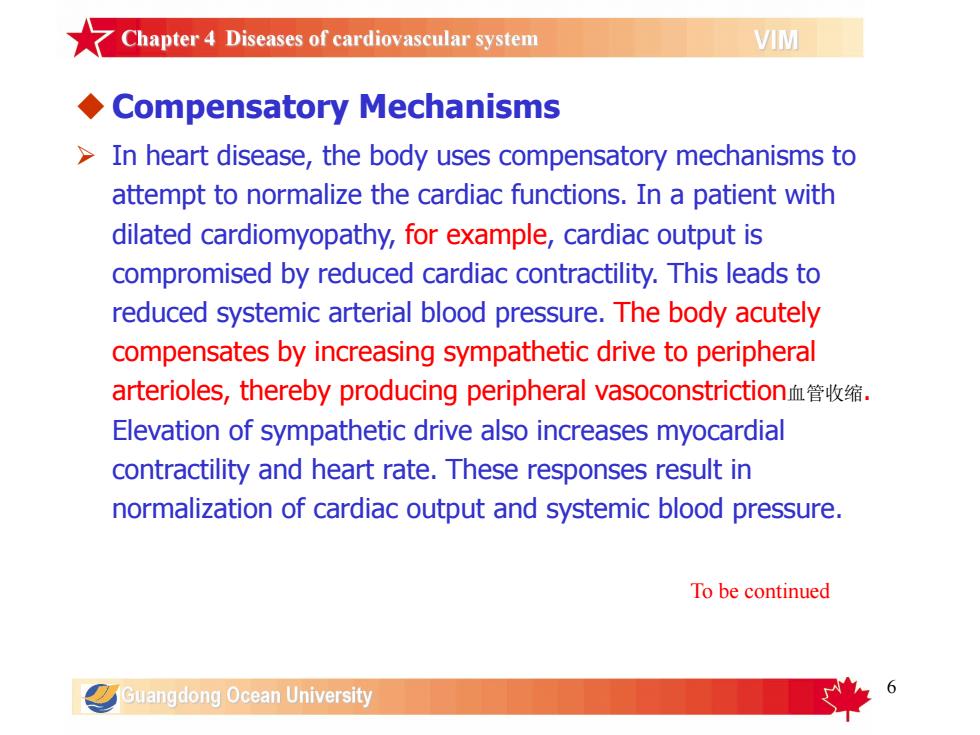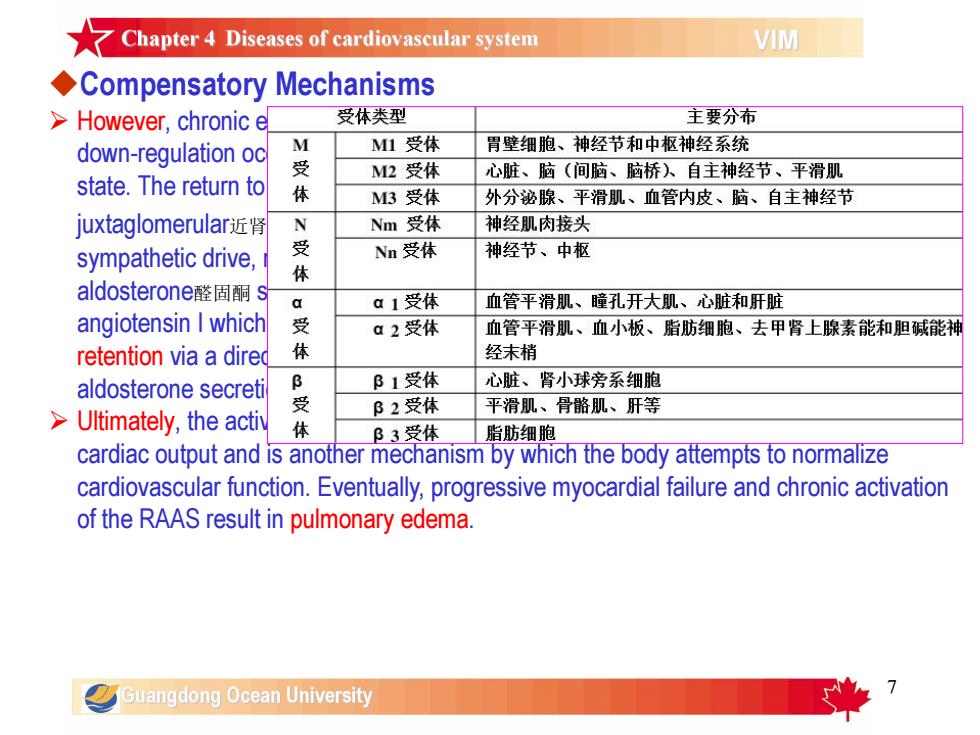
7Chapter4Diseases of cardiovascular systemVIMCompensatoryMechanismsIn heart disease, the body uses compensatory mechanismstoattempt to normalize the cardiac functions. In a patient withdilated cardiomyopathy, for example, cardiac output iscompromised by reduced cardiac contractility. This leads toreduced systemic arterial blood pressure.The body acutelycompensates by increasing sympathetic drive to peripheralarterioles,therebyproducingperipheralvasoconstriction血管收缩.Elevation of sympathetic drive also increases myocardialcontractility and heart rate. These responses result innormalizationof cardiacoutputand systemicbloodpressureTo be continuedGuangdong Ocean University
6 uCompensatory Mechanisms Ø In heart disease, the body uses compensatory mechanisms to attempt to normalize the cardiac functions. In a patient with dilated cardiomyopathy, for example, cardiac output is compromised by reduced cardiac contractility. This leads to reduced systemic arterial blood pressure. The body acutely compensates by increasing sympathetic drive to peripheral arterioles, thereby producing peripheral vasoconstriction血管收缩. Elevation of sympathetic drive also increases myocardial contractility and heart rate. These responses result in normalization of cardiac output and systemic blood pressure. To be continued

Chapter4Diseases ofcardiovascular systemVIMCompensatoryMechanisms受体类型主要分布>However,chroniceMI受体V胃壁细胞、神经节和中枢神经系统down-regulation oc受M2受体心脏、脑(间脑、脑桥)自主神经节、平滑肌state.Thereturn to体M3受体外分泌腺、平滑肌、血管内皮、脑、自主神经节juxtaglomerular近肾NNm受体神经肌肉接头受Nn受体神经节、中枢sympatheticdrive体aldosterone醛固酮α1受体血管平滑肌、瞳孔开大肌、心脏和肝脏aangiotensin I which受α2受体血管平滑肌、血小板、脂肪细胞、去甲肾上腺素能和胆碱能神体经末梢retention via a direcβ1受体心脏、肾小球旁系细胞βaldosterone secret受β2受体平滑肌、骨骼肌、肝等Ultimately,theactiv体β3受体脂肪细胞cardiac output and is anothermechanismbywhich thebodyattemptstonormalizecardiovascularfunction.Eventually,progressivemyocardialfailureand chronicactivationoftheRAASresult inpulmonaryedemaGuangdong Ocean University
7 uCompensatory Mechanisms Ø However, chronic elevation of sympathetic drive damages the myocardium and β-receptor down-regulation occurs. This returns myocardial contractility to its previously reduced state. The return to reduced cardiac output results in a decrease in sodium delivery to the juxtaglomerular近肾小球的 apparatus of the kidneys, which, along with chronic elevation of sympathetic drive, results in increased renin release, activation of renin-angiotensin- aldosterone醛固酮 system (RAAS), and conversion of angiotensinogen (liver produced to angiotensin I which is then converted to angiotensin II. This increases sodium and water retention via a direct effect on the renal tubules as well as secondarily via an increase in aldosterone secretion, to increase the blood volume. Ø Ultimately, the activation of the RAAS results in increased blood volume and increased cardiac output and is another mechanism by which the body attempts to normalize cardiovascular function. Eventually, progressive myocardial failure and chronic activation of the RAAS result in pulmonary edema